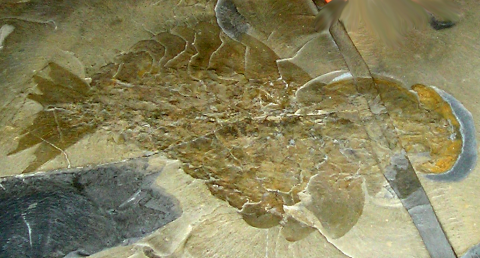A Rare Large Predator from the Cambrian Period Discovered!

What animal group has multifaceted eyes, a pineapple shaped body, a tooth-lined mouth, and a pair of spiny claws below its large head for grabbing prey?
Answer: radiodonts.
Radiodonts are primitive arthropods with a toothy circular jaw - the most famous probably being Anomalocaris. Anomalocaris fossils were found in the Burgess Shale of Canada and date back to the Cambrian period 540 million years ago. Fossils of the Burgess shale are famous because they provide an ancient lineage to several animal body shapes that we still see today. A recent fossil discovery dating back 506 million years reveal a new radiodont that may be one of the largest ancient predators found so far - Titanokorys gainesi. This species was a half of a meter long and possessed a large conspicuous head carapace so much bigger compared to its body size that members of this group can be described as "swimming heads". The name Titanokorys means "titanic helmet" and fossils of it were found in the Burgess Shale of Kootenay National Park. The body shape of this ancient marine creature is dubbed "the mother ship" because it resembles a spaceship straight out of science fiction books. In addition to its strange body shape, Titanokorys had limbs that look like stacked rakes which most likely allowed them to "rake" the ocean floor for bottom-dwelling prey. A 16 inch long predator may not send chills up your spine these days but back in the Cambrian period most animals were smaller than your pinky finger. A rare fossil find indeed.
Sources:

